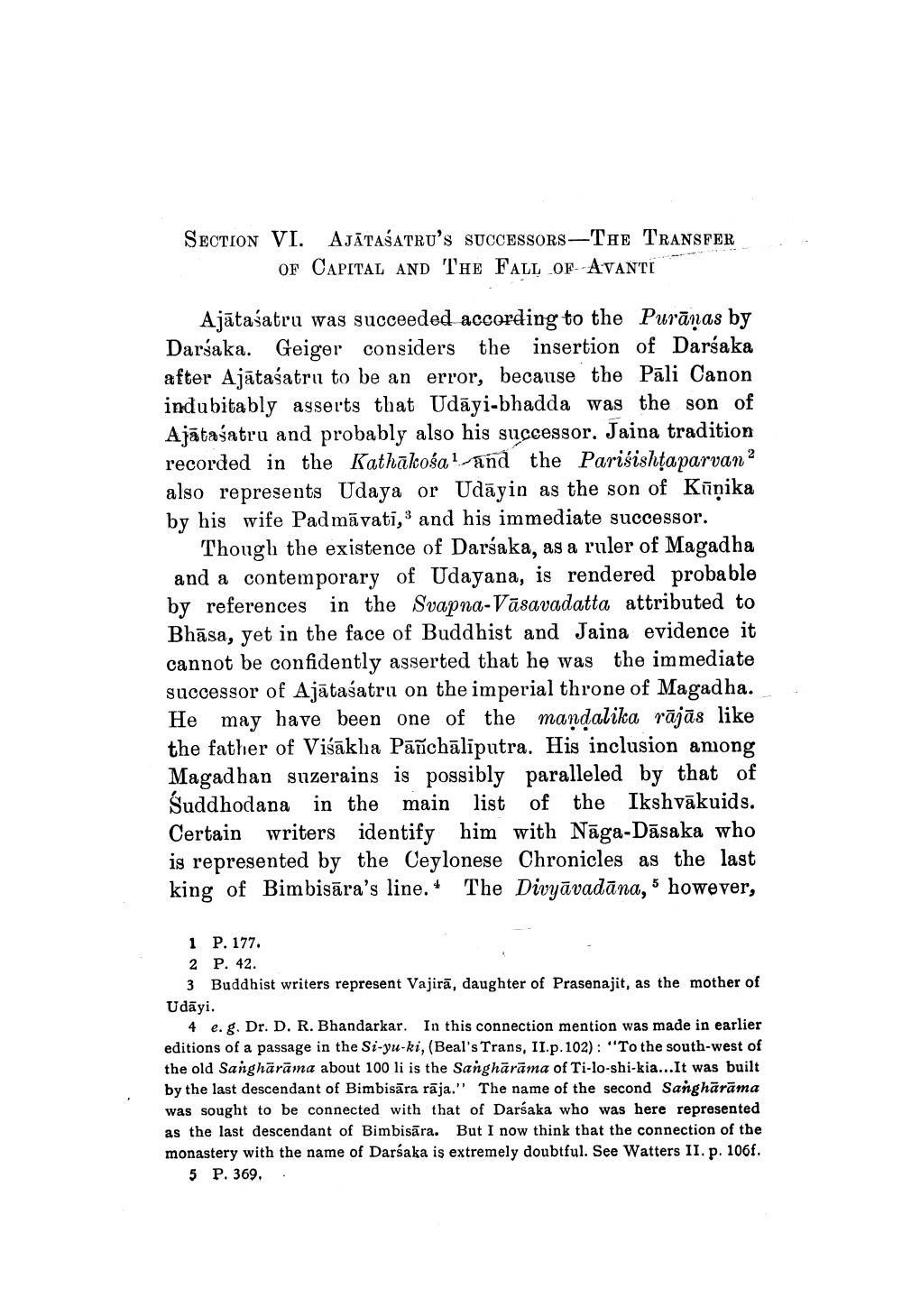________________
SECTION VI. AJATASATRU'S SUCCESSORS-THE TRANSFER OF CAPITAL AND THE FALL OF AVANTI
Ajatasatru was succeeded according to the Puranas by Darsaka. Geiger considers the insertion of Darsaka after Ajataśatru to be an error, because the Pali Canon indubitably asserts that Udayi-bhadda was the son of Ajatasatru and probably also his successor. Jaina tradition recorded in the Kathakosa and the Parisishṭaparvan 2 also represents Udaya or Udayin as the son of Kūņika by his wife Padmavati, and his immediate successor.
Though the existence of Darśaka, as a ruler of Magadha and a contemporary of Udayana, is rendered probable by references in the Svapna-Vasavadatta attributed to Bhasa, yet in the face of Buddhist and Jaina evidence it cannot be confidently asserted that he was the immediate successor of Ajataśatru on the imperial throne of Magadha. He may have been one of the mandalika rājās like the father of Visakha Pañchālīputra. His inclusion among Magadhan suzerains is possibly paralleled by that of Suddhodana in the main list of the Ikshvākuids. Certain writers identify him with Naga- Dāsaka who is represented by the Ceylonese Chronicles as the last king of Bimbisara's line. The Divyāvadāna, however,
5
1 P. 177.
2 P. 42.
3 Buddhist writers represent Vajira, daughter of Prasenajit, as the mother of Udayi.
4 e. g. Dr. D. R. Bhandarkar. In this connection mention was made in earlier editions of a passage in the Si-yu-ki, (Beal's Trans, II.p. 102): "To the south-west of the old Sanghārama about 100 li is the Sanghārama of Ti-lo-shi-kia... It was built by the last descendant of Bimbisāra rāja." The name of the second Sanghārāma was sought to be connected with that of Darśaka who was here represented as the last descendant of Bimbisāra. But I now think that the connection of the monastery with the name of Darśaka is extremely doubtful. See Watters II. p. 106f.
5 P. 369.




